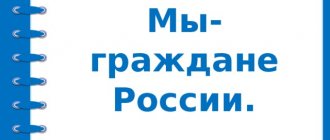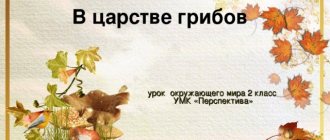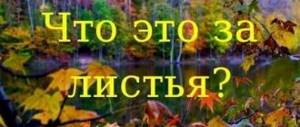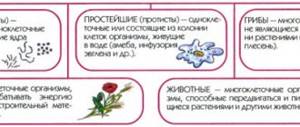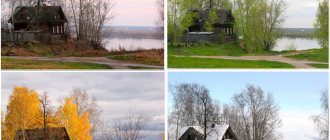“Native land, forever beloved”
Tarzimina Razilya Gazyiovna
MBOU "Lyceum-boarding school No. 24" NMR RT
“Native land, forever beloved”
Every person on earth has his own corner, his own place where he was born, where his life’s journey began and where his soul becomes light and so sweet to his heart. For some it may be a village, for others it is a city, for others it is a country. Each of us has our own land-land of grandfathers and great-grandfathers. The land where a person was born remains forever in our hearts. we constantly return to our lands. For me, my native land is my city……….. The beauty of my city constantly attracts me. I just want to walk along the streets of my hometown, breathe in the smell of old walls... Well, something like that, and then tell me about your city.
CLASS HOUR OBJECTIVE:
introduce students to the history of their hometown Nizhnekamsk;
develop oral speech, memory, attention;
cultivate love for one's native land.
EQUIPMENT: photos about Nizhnekamsk, multimedia installation, album sheet, felt-tip pens, children's drawings about the city of Nizhnekamsk.
PROGRESS OF THE CLASS HOUR
INTRODUCTION
I know there will be a city! I know the garden will bloom! When there are such people in the Soviet country!
– What do you think the poem is talking about?
– Which city exactly?
– How old is our city?
Today in class we will talk about our beloved city of Nizhnekamsk. (Slide 1,2)
HISTORICAL REFERENCE
1. – In what year was our city founded? (Fig. 1, slide 3)
Nizhnekamsk is a city (since September 22, 1966) of republican subordination, the center of the Nizhnekamsk region. Founded: December 25, 1960.
2. – Where is it located?
Nizhnekamsk is located in the northeastern part of the Republic of Tatarstan, 8 km from the Kama River. (Fig. 2, slide 4)
Nizhnekamsk is the third largest city in the republic and the second, youngest, in the Lower Kama region.
3. – Who lives in our city?
The population of the city and region numbers over 260 thousand inhabitants, including 49.2% Tatars, 46.1% Russians, 3% Chuvash, Ukrainians, 1% Bashkirs. There are about forty nationalities in total. Average age 32 years. On average, nine children are born every day in Nizhnekamsk.
4. – Guys, do you love your city and why?
Nizhnekamsk was successfully designed; the master plan for the construction of the city was at one time awarded the gold medal of the USSR Exhibition of Economic Achievements. Designers, and then builders and city residents created a garden city, beautiful and comfortable. The city has a lot of greenery and wide streets. Residential areas are located on the high bank of the Kama.
5. – What is our city famous for?
Stretching out in a bend of the Kama River (the surface of the river at the bend shines like a silver horseshoe - a sign of happiness), for more than 10 kilometers, the city is surrounded on both sides by forest. It is separated from the industrial zone by a sanitary zone of 5-7 kilometers in length; there are orchards growing here. To the side, on a hill, in the forest there are: a petrochemical plant, a tire plant, an oil refinery, a mechanical plant, a carbon black plant, energy, construction and transport enterprises.
Project “Native land, forever beloved”
Subject. “Native land, forever beloved”
Relevance.
Motherland, Fatherland... In the roots of these words there are images close to everyone: mother and father, parents, those who give life to a new being. Instilling a sense of patriotism in preschoolers is a complex and lengthy process. Love for loved ones, for kindergarten, village, hometown and home country play a huge role in the development of a child’s personality.
Acquaintance of children with their native land: with historical, cultural, national, geographical, natural features forms in them such character traits that will help them become a patriot and citizen of their Motherland. After all, vivid impressions of one’s native nature and the history of one’s native land, received in childhood, often remain in a person’s memory for the rest of his life.
And indeed, no matter how great our country is, a person connects his feeling of love for it with the places where he was born and raised; with a street that I have walked along more than once; with the yard where I planted the first tree
One of the priority areas in the law “On Education of the Russian Federation” was the introduction of preschool children to the national and regional cultural heritage and history of the country and region.
The main tasks of moral and patriotic education in the education system:
- ensure the historical continuity of generations, preservation, dissemination and development of national culture, fostering a careful attitude towards the historical and cultural heritage of the peoples of Russia;
- education of Russian patriots, citizens of a legal, democratic state, capable of socialization in a civil society;
The task of instilling a sense of patriotism and love for the small Motherland has traditionally been solved in the group from a young age, but it is necessary to strengthen the work in this direction and fill it with new content. Therefore, there was a need to change the forms of organizing the pedagogical process to familiarize children with the features of their village or city. The solution to this problem was the implementation of the project.
In this project we will talk about the significance of the history of the native village, city, and its influence on the patriotic education of preschool children and their parents. The successful development of preschool children when getting to know their small homeland is possible only under the condition of active interaction with the outside world in an emotionally practical way, i.e. through play, objective activity, communication, work, learning, various types of activities characteristic of preschool age.
Hypothesis.
If, during the implementation of the project, children acquire knowledge about the history of the village, city, symbols, attractions, know the names of those who founded and glorified the Smolensk region, begin to show interest in events from the life of their village and reflect their impressions in productive activities, then we can consider that the goal and objectives of the project have been fulfilled.
Goal: Introducing preschoolers to the history and culture of their native land, local attractions.
Tasks:
Cognitive development
- To give children knowledge about their native land, village, city: history, symbols, attractions, industrial facilities, their harm and benefits, the environmental situation in the region.
- Introduce the names of those who founded and glorified the city of Smolensk.
- Replenish your own knowledge and the knowledge of your parents about your small homeland.
Social and communicative development.
- To awaken in children a feeling of love for their village, city, respect for its traditions and customs
- To form an environmental culture in children and their parents, a desire to take part in activities to protect the environment and a healthy lifestyle.
- Create conditions for the perception of information about the historical past and cultural appearance of the native land.
Speech development.
- Develop children's coherent speech, memory, imagination, logical thinking.
- Teach children to listen to each other and be attentive.
- Practice speaking skills during a presentation prepared together with parents.
- Develop the ability to create words.
Artistic and aesthetic development.
- Introduce the culture and traditions of the Smolensk region.
- Use different techniques of visual activity to convey acquired knowledge.
- Use a literary word when getting acquainted with the history of a village or city.
Physical development.
- To form the foundations of environmental education and a healthy lifestyle in every family.
- To foster feelings of pride in Smolensk athletes, their successes, and the desire to try themselves in sports.
Expected result:
- Children will develop knowledge about their native village, city, region.
- Children and parents will take an active part in exhibitions, competitions, discussions, and other activities.
- Preschoolers will acquire social communication skills with adults.
- Children will show attention and respect to veterans and elderly people, and will be able to provide them with all possible assistance.
- Educators, children and parents will come to understand their importance as cultural and enlightened people in the development of the region, city, and village.
Project product: replenishment of the mini-museum on local history with material.
Project participants
- children
- educators
- parents
Implementation deadlines
September 2020 – May 2020
Stage 1: Preparatory
1). Information-cumulative:
- Studying the interest of children and parents to determine the goals of the project.
- Collection and analysis of literature for adults and children.
- Contacting specialists.
2). Project development
- Conversations with parents and children. Goal: to identify knowledge about their native land, their willingness to expand this knowledge and share with each other.
- Creation of a creative group (parents interested in this topic, teacher).
- Inform project participants of the importance of this problem. Get each participant interested in the topic of the project.
- Selection of methodological, popular science and fiction literature, illustrative material on this topic.
- Drawing up a work plan for the project.
Stage 2: Basic
Forms and methods of working with children
Play activity
- Board and didactic games “Collect a coat of arms”, “Nature of your native land”, etc.
- Role-playing games.
- Design of didactic games on local history: “Collect a picture”, “Map of my village”, “City of the future”, “My native land”, “Find out where it is?”, “Here is my street, here is my home”
Cognitive development
- Excursions around the village.
- Excursion to the library. The librarian's story about the formation of our village.
- Games, songs and costumes of our grandparents
- Conducting a cycle of cognitive educational activities on the topics: “Smolensk - past and present”, “My Motherland is the Smolensk region!”, “Red Book of the Smolensk Region”, “Smolens - participants of the Second World War”, “What old photographs told us”, “Family. Family tree of my family"
- Watching the video “My Kindergarten”, “Where the Motherland Begins”
- Visiting of museum.
Productive activity
- Folk art of the Smolensk region.
- Modeling “Animals and Birds”
- Creation of a folder of drawings “Smolensk – through the eyes of children and parents”
- Making models of “My dear home”, “Our kindergarten”.
- Design of a series of photo albums “Travel through the village of Kardymovo”, “Museums of the city of Smolensk”, “Their names glorified the Smolensk region”.
Speech development
- writing creative stories “My favorite corner of Kardymovo”
- conversations with children “Darling Mommy”, “My granny is the best”, “Our family”
Introduction to fiction
- acquaintance with the works of children's writers of the Smolensk region (library)
- Learning poems and songs about the Smolensk region.
Music
- lesson – game “Getting to know the games of grandparents”
- “A carol came on the eve of Christmas”
- "We are playing in a folk orchestra"
Forms and methods of working with parents
- Conversations with parents about the importance of this problem
- Design of the traveling folder “Love and know your native land”
- Making family albums
- Involving parents in replenishing the local history corner with items from Russian everyday life
- Design of the albums “Sights of my city”, “Red Book of the Smolensk region”, “Birds of our native land”, “Nature of our land”
- Information for parents “History of the native city”, etc.
Stage 3. Final
1). Presentation - final
- Design of the local history corner “My Favorite Village”
- Open lesson “My Small Motherland”
- Exhibition of children's activity products.
- Assessment of the stages of project implementation by children.
2). Control-reflexive
- Summarizing.
- Conversation “What did we want to know, what did we learn, why did we learn?”
Literature:
- Loginova V.I., Babaeva T.I. Development and education program in kindergarten “Childhood”, St. Petersburg: Childhood-press, 2000.
- Barannikova O.N. Lessons on citizenship and patriotism in kindergarten: a practical guide. – M.: ARKTI, 2007.
- A system of work to instill a sense of patriotism. Preparatory group. / Comp. T.V. Ivanova – Volgograd: ITD “Corypheus”, 2008.
- Kovaleva G.A. Raising a little citizen: A practical guide for workers in preschool educational institutions. – M.: ARKTI, 2005.
- Aleshina N.V. Patriotic education of preschool children. Lesson notes. – M.: TC “Perspective”, 2008.
- Makhaneva M.D. Moral and patriotic education of preschool children. Toolkit. – M.: Sphere shopping center, 2009.
